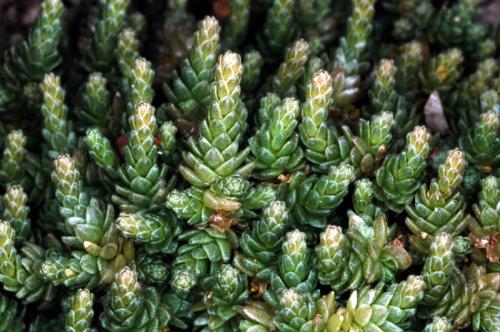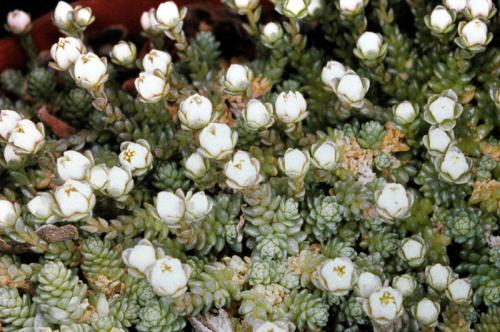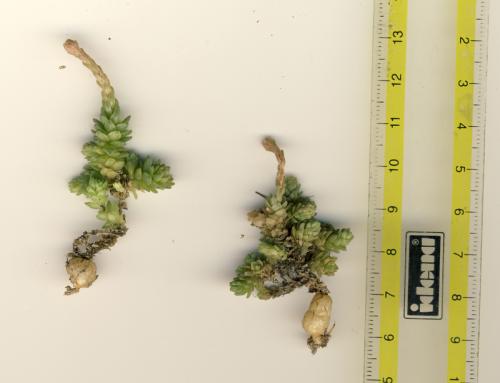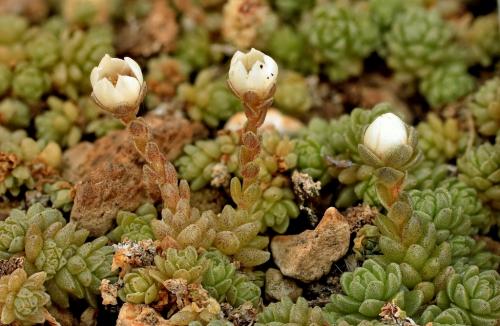COMPACTUM Rose, 1911
Subgenus Sedum
Distribution : Mexico (Oaxaca, Puebla); rocks, 2100 - 2400 m.
Description (by 't Hart & Bleij in IHSP, 2003) :
Tiny creeping perennial herbs with small tufted branches and terminal compact rosettes, forming dense moss-like carpets.
Leaves closely imbricate, alternate, narrowly oblong, obtuse, sometimes spurred, flattened, 3 - 5 mm, glabrous, fleshy, green.
Inflorescences : Flowering branches ascending or erect, 3 - 4 cm, inflorescences terminal solitary flowers, bracts oblong, 2 - 3 mm.
FIowers 5-merous, sessile, sepals broadly sessile, basally free, slightly unequal, broadly obovate to orbicular, shortly apiculate, 2 - 3 mm, petals basally slightly connate, broadly ovate, subobtuse, submucronate, ± 4 mm, white.
Cytology : 2n = 120
Ray Stephenson (Sedum, Cultivated Stonecrops, 1994, p 248) :
Superficially, Sedum compactum is similar to the well-known S. humifusum in that it produces an exceptionally tight mat of short stems clothed with tufts of leaves. Said to resemble moss in the wild, S. compactum has papillose leaves, which are clustered into compact rosettes no more than a centimeter (0,4 in) across. White flowers, which are produced singly or a few at a time, are unusual in that they are globular. This species is rare in cultivation.
Habitat : This stonecrop is native to Oaxaca, Cerro de Sentile, in the Southern Sierra Madre at 2100 to 2400 m (6900 to 7900 ft), most probably on solid rock, for in anything more friable, plants may be lifted without effort, as fibrous roots are feeble.
Main points of distinction : This species could only be confused with Sedum humifusum, which has hairy leaves and yellow flowers. Globular flowers of S. compactum never fully open, but have a faint, sweet smell.
Variation : None noticed.
Horticulture : Plants are easily split for propagation, which I recommend doing frequently as overhead watering can kill plants. Plants frequently remain with no signs of growth for months before perishing - often without apparent reason. This is a very special plant because of its low, very compact growth. Large specimen plants in a shallow pan are a joy to behold, but a challenge to the grower. Plants are not at all hardy, so in some countries this stonecrop could not be considered for alpine shows as the grower would have to keep frosts away from the greenhouse by artificially heating it.


A plant with underground tubers - never mentioned in descriptions !


Photo Stefan Neuwirth